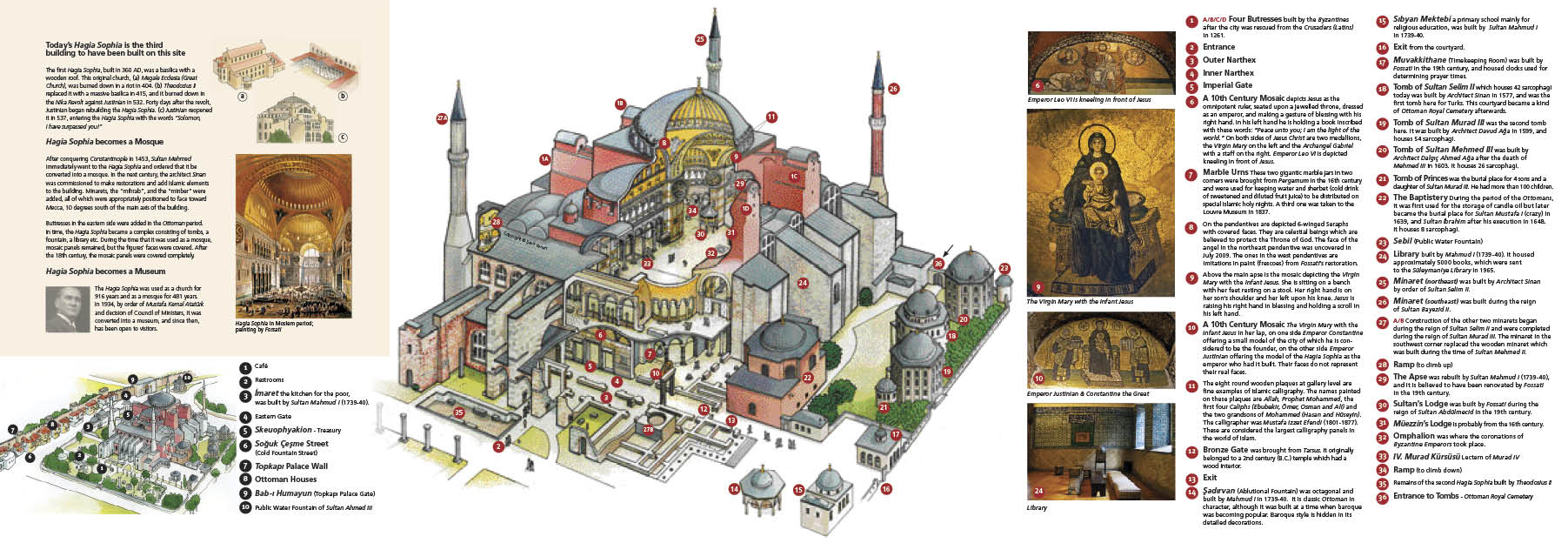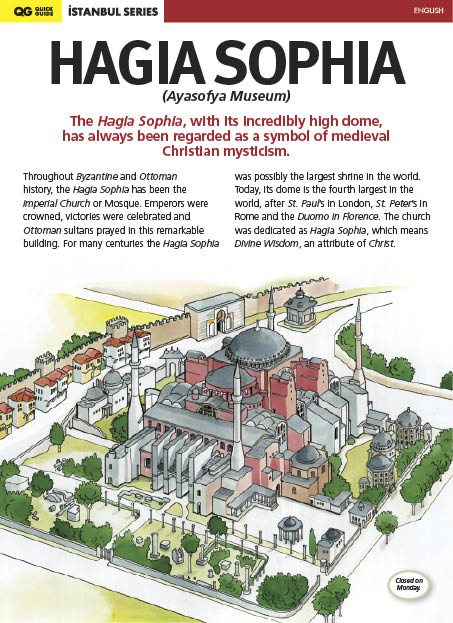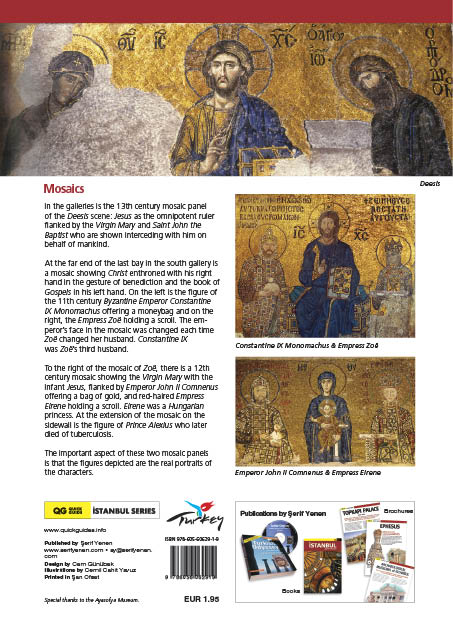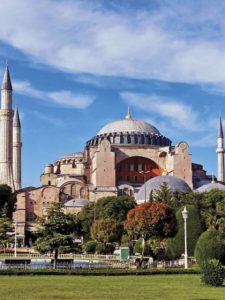Hagia Sophia
The Hagia Sophia (St. Sophia Church – Ayasofya Museum), also known as Ayasofya in Turkish, is one of the most iconic landmarks in Istanbul, Turkey, and holds immense historical and architectural significance. It has served as a cathedral, a mosque, and a museum, making it a symbol of the city’s rich and diverse history. As of my last update in September 2021, please note that there might have been changes in its status or accessibility since then.
Hagia Sophia (St. Sophia Church – Ayasofya Museum) in Istanbul
A user friendly and informative Hagia Sophia Pamphlet with illustrations and plans. Its content is very easy to understand. In addition to general information about the Hagia Sophia Church (St. Sophia Church – Ayasofya Mosque-Museum) in Istanbul, Turkey, it shows the photos of all of the major monuments in and around the church-mosque. A general plan of the surrounding areas will help the reader to get oriented to the Sultanahmet neighborhood.
ISBN: 978-605-60629-1-9 Quick Guide Hagia Sophia (English, Turkish, German, French, Spanish, Italian, Portuguese, Greek, Russian)
Here’s an overview of Hagia Sophia history and significance:
History:
- Byzantine Cathedral: Built in the 6th century during the reign of Emperor Justinian I, the Hagia Sophia was originally constructed as an Eastern Orthodox cathedral and served as the primary cathedral of Constantinople (present-day Istanbul) for nearly 1,000 years.
- Architectural Marvel: The Hagia Sophia’s architectural design is remarkable for its massive dome, intricate mosaics, and innovative use of pendentives to support the dome’s weight. It was the largest cathedral in the world for nearly a thousand years and a masterpiece of Byzantine architecture.
- Conversion to Mosque: After the Ottoman Empire conquered Constantinople in 1453, the Hagia Sophia was converted into a mosque by Sultan Mehmed the Conqueror. Islamic features were added, such as minarets and calligraphy.
- Museum: In 1935, under the leadership of Mustafa Kemal Atatürk, the Hagia Sophia was transformed into a museum as part of Turkey’s secularization efforts. Its status as a museum aimed to preserve its historical and cultural significance for both Christian and Islamic heritage.
Architecture and Features:
- Dome: The Hagia Sophia’s massive dome is a prime example of architectural innovation. It was considered an engineering marvel of its time, and its construction techniques have influenced later dome structures.
- Mosaics: The interior of the Hagia Sophia was adorned with stunning mosaics depicting religious scenes, portraits of emperors, and various motifs. Some of these mosaics were covered or altered after the mosque conversion.
- Minarets and Islamic Elements: As a mosque, the Hagia Sophia gained additional architectural elements such as minarets and a mihrab (prayer niche). Islamic calligraphy and decorations were added to the interior.
Symbolism and Significance:
- Cultural Crossroads: The Hagia Sophia stands as a testament to Istanbul’s role as a historical crossroads where different cultures, religions, and civilizations intersected.
- Religious Heritage: It embodies the historical transition from the Byzantine Christian era to the Ottoman Islamic period, reflecting the evolution of Istanbul’s identity over time.
- Tourist Attraction: The Hagia Sophia has been a major tourist attraction, drawing visitors from around the world to admire its architectural splendor and absorb its historical narrative.
Please verify any updates or changes related to the Hagia Sophia’s status or accessibility since my last update in September 2021, as circumstances may have evolved since then.










